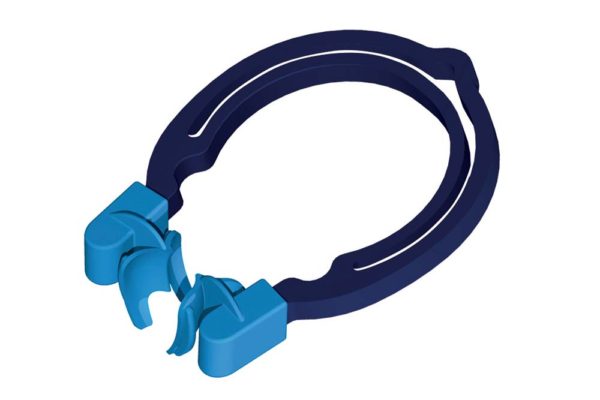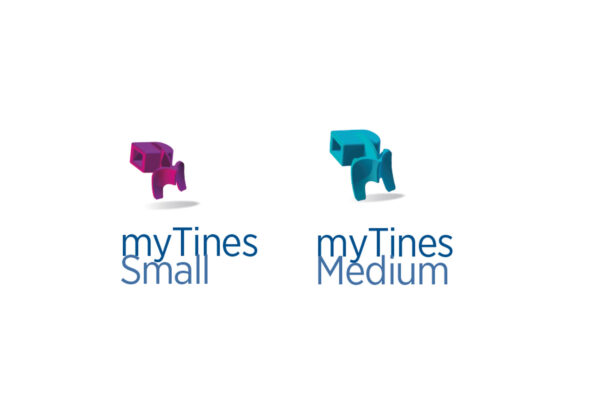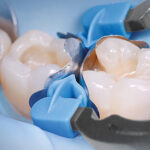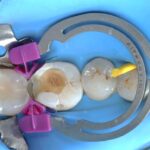03 Apr Replacement of an old amalgam and restoration of Class II cavities – myRing Forte with myTines Large & myTines Small – Dr. Giuseppe Chiodera
Replacement of an old amalgam and restoration of Class II cavities with myRing Forte, myTines Large & myTines Small
by Dr. Giuseppe Chiodera

Dr. Giuseppe Chiodera
Dr. Chiodera graduated in Dentistry at the University of Brescia.
In year 2004 he won a scholarship at Kings College University of London.
Member of Style Italiano, Dr. Chiodera runs a private practice mainly dedicated to conservative dentistry and endodontics, in Italy since 2006.
Dr. Chiodera is also a very active author of national and international Journal articles, as well as lecturer in many universities.
clinical case
The patient came to our attention for the replacement of an old amalgam on molar 26. The most common problems when threating old metal fillings are cracks which can develop on the tooth structure, especially on the crowns. Cracks are mainly due to the combination of two factors, the invasive preparation needed before placing an amalgam which weakens the tooth structure and the difference in thermal expansion coefficients between the metal filling and the tooth. When, for instance, a hot food is eaten, the metal filling and the tooth expand at different rates, as a matter of facts the amalgam expands more quickly applying pressure on the tooth. The cyclic application of pressure over the years can lead to the development of cracks and possible cusp fractures once the filling is removed.
The following images show the step-by-step direct composite restoration procedure using myQuickmat Forte kit (Polydentia) in combination of the myTines Small and myTines Large (Polydentia). The myTines Large are a very useful tools when restoring wide cavities even in case of a missing cusp. The semi-rigid structure of the extremities allows the reconstruction of large portion of the tooth without collapsing the matrix into the cavity.
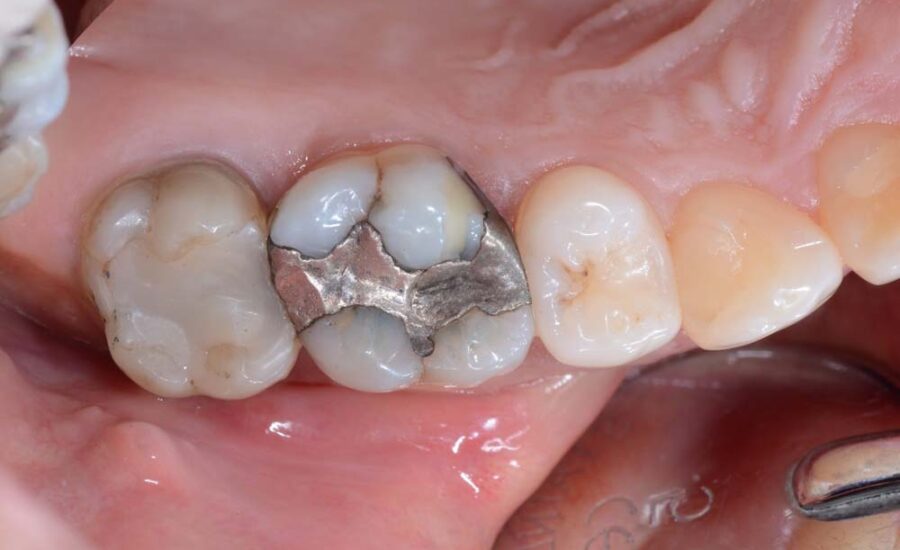
1: Pre-operative view showing the old amalgam and composite restorations to be replaced.
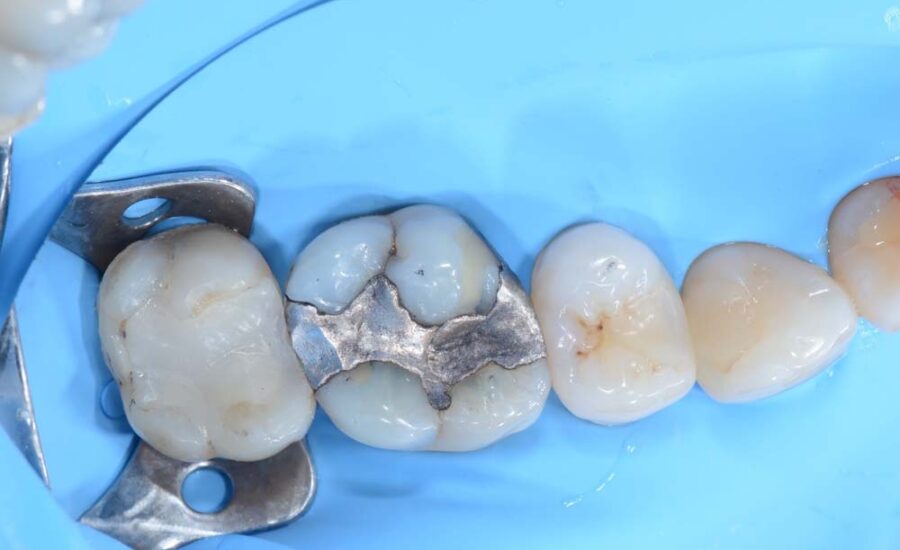
2: The quadrant under isolation.
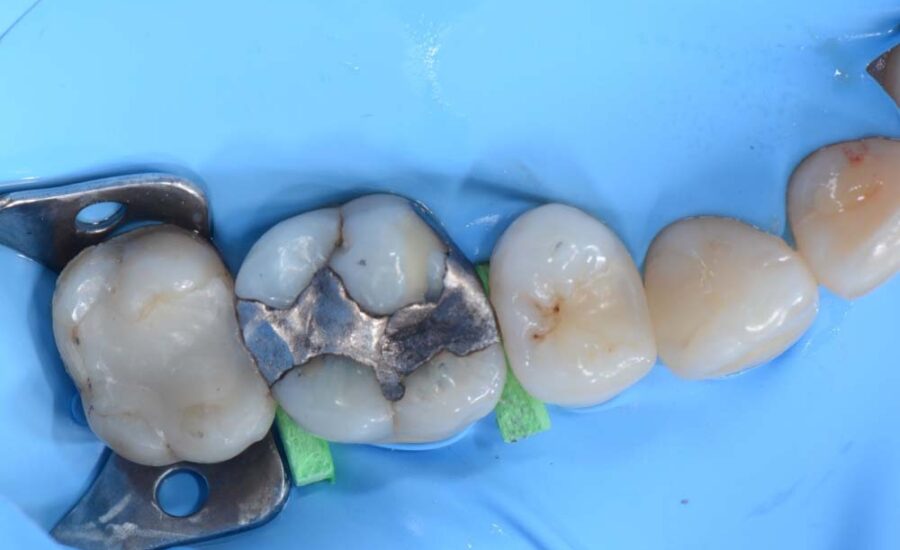
3: Pre-wedging: Wood wedges were cut to better accommodate the ring.
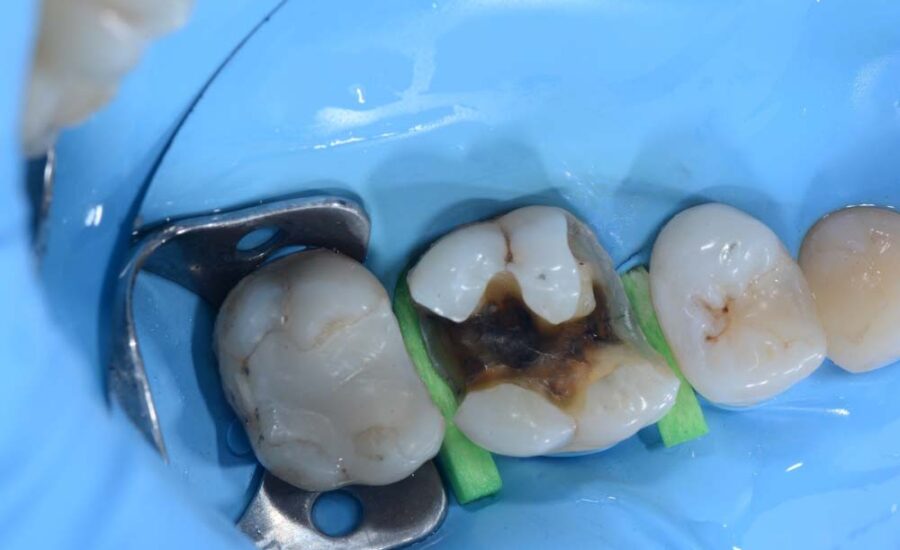
4: Molar 26 after the elimination of the old amalgam and composite restorations. Removal of previous metal filling often leads to wide cavities which requires special tools for the direct composite restoration. For the present case, the extremities myTines Large in combination with myRing Forte were used.

5: The cavity after cleaning and disinfection.
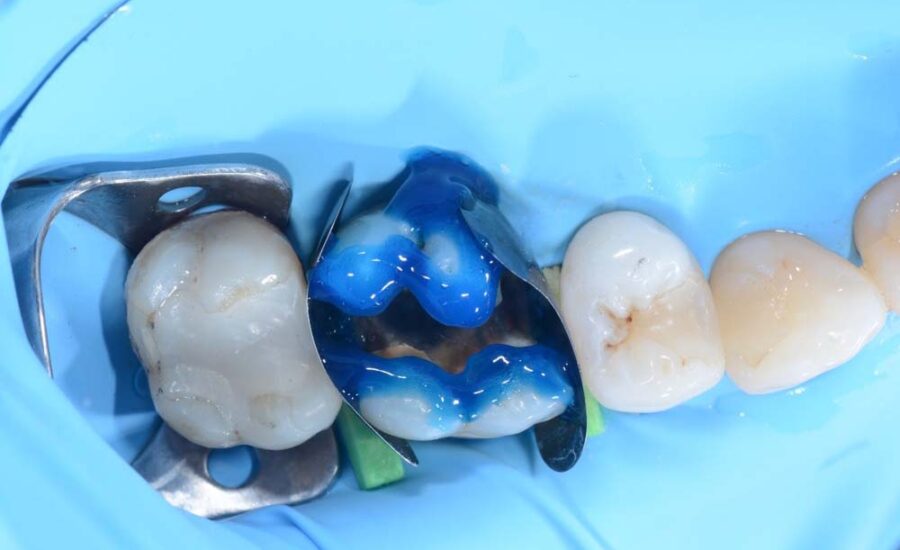
6: Etching of the enamel. Two LumiContrast matrices were placed on mesial and distal sides to protect the adjacent teeth from the orthophosphoric acid.
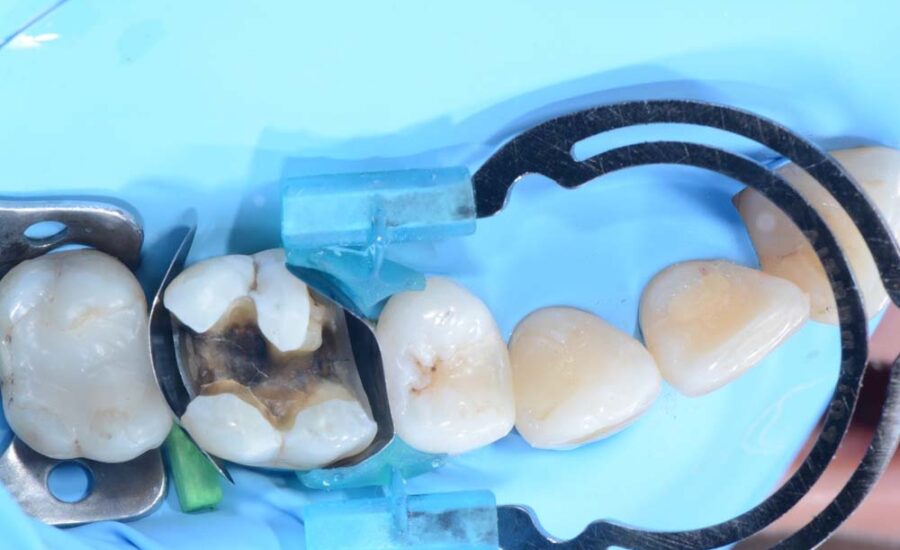
7: myRing Forte in combination with the extremities myTines Large placed on the tooth before proceeding with the reconstruction of the mesial proximal wall. The semi-rigid, asymmetric geometry of myTines Large ensures an improved stability of the ring even when a cusp is missing. The extremities can also be inverted to increase matrix adaptation of wide cavities on both mesial and distal sides of the tooth.
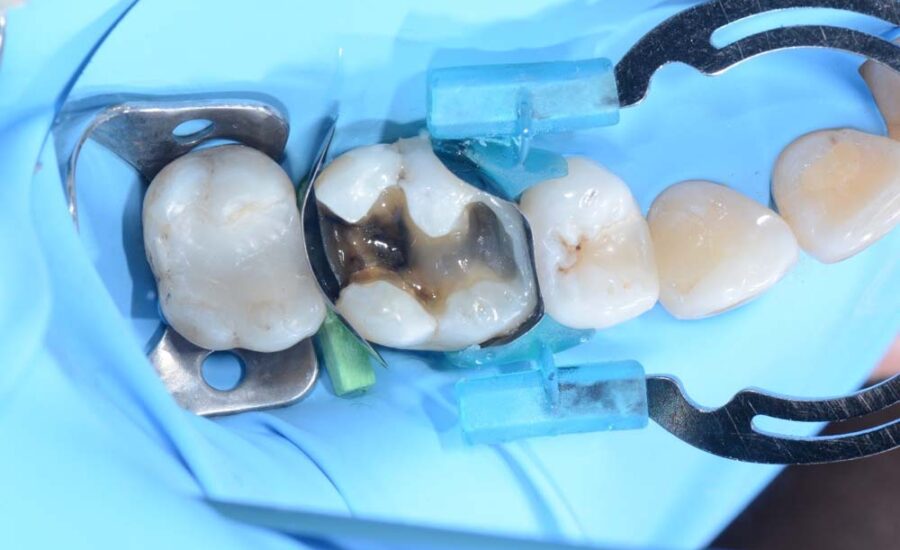
8: Restoration of the mesial proximal wall.
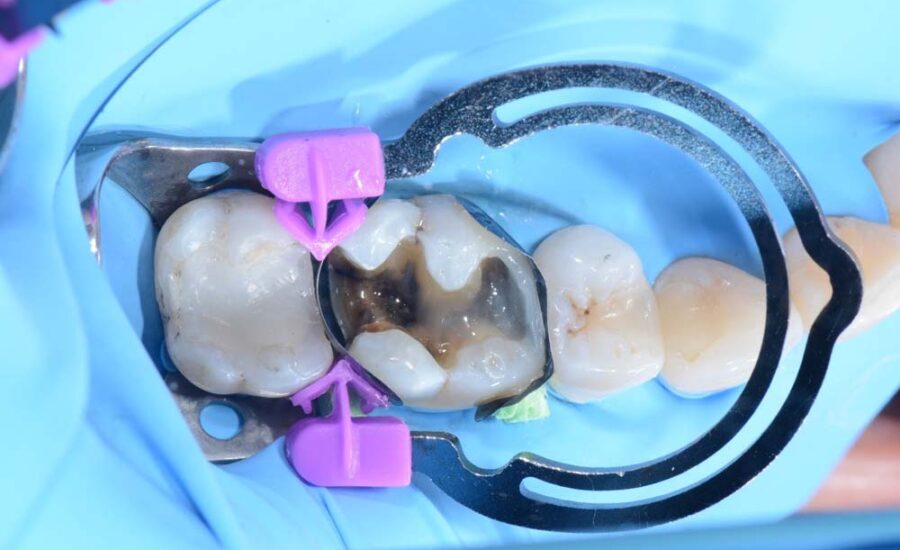
9: myRing forte was then removed from the tooth and moved in order to proceed with the restoration of the distal interproximal wall. In this case the reduced size of the cavity makes the extremities myTines Small the best solution for a correct restoration of the contact point.
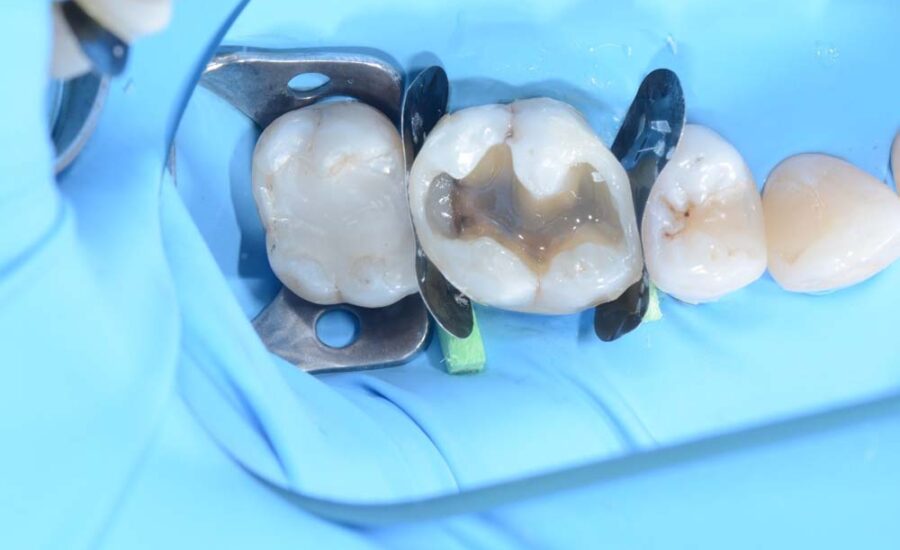
10: #26 after restoration of both interproximal walls before reconstruction of the occlusal surface.
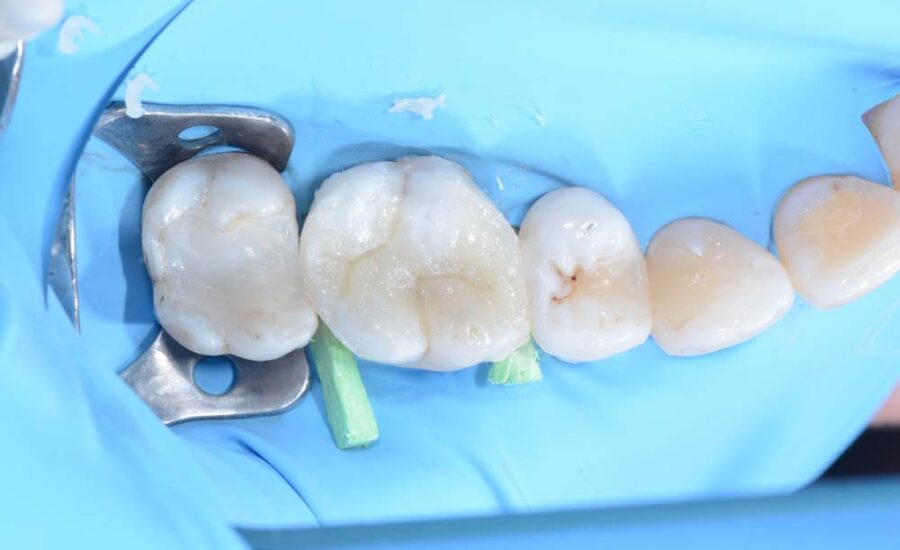
11: The clinical situation after the restoration of the occlusal surface before finishing and polishing.
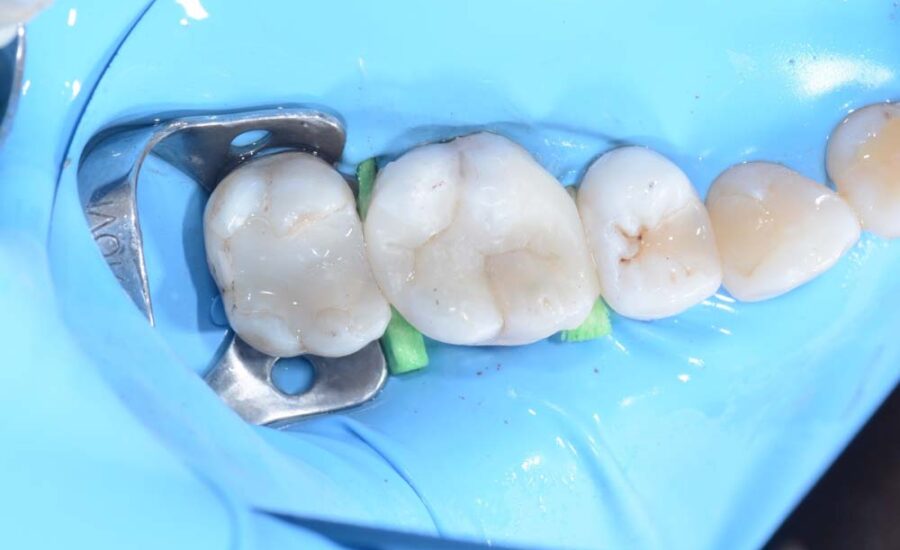
12: Post-operative view of the restoration.
conclusion
Replacing old amalgams often leads to extensive cavity preparations. Restorations of these lesions won’t be successful if the dentist uses inappropriate tools. The new ring extremities from Polydentia, myTines Small and Large, can be mounted on the same separator ring, and when coupled with myRing Forte, the sectional matrix system becomes an excellent restorative device. The combination of Polydentia conservative solutions permitted me to achieve a natural looking and functionally correct restoration in this case with different cavity widths.
other clinical cases
-
Class II adjacent cavities on 1st and 2nd molars – QuickmatFIT anatomical sectional matrices & myRing Forte – Dr David Gerdolle
A 28-year-old female patient, without any systemic medical conditions presented with a carious lesion affecting both molar 46D and 47M. The following case illustrates the direct composite restoration of the lesion using the Polydentia QuickmatFIT anatomical sectional matrices in combination with myRing Forte and myWedge plastic v-shaped wedges....
-
Class II cavity direct composite restoration on a young permanent premolar – myClip 2.0 – Dr Marina Papachroni
For young patients rebuilding the anatomy in class II cavity restorations is a major issue but not making too many occlusal adjustments after finishing the layering procedures is one of the same importance aspects. The following images show the step-by-step treatment we performed for treating decay on the upper first premolar of a 15-year-old teenager. ...
-
Class II cavity direct restoration on young permanent molar with myQuickmat Forte – Dr Marina Papachroni
Class II (interproximal) decay involves the proximal surface of a posterior tooth and it is a common occurrence in many dental patients. One challenge for the clinician is to accurately recreate a physical contact to the adjacent tooth and, at the same time, to restore proper interproximal anatomic form. This case involves a teenager 16 years old with an interproximal lesion in his left lower molar (#36)....
-
Class II direct composite restoration on first premolar – QuickmatFLEX sectional matrices and myClip Junior – Dr Marina Papachroni
A male teenager came to our office feeling pain in the upper left quadrant. We proceeded with a Class II restoration of the first premolar without removing brackets. The following images show the step-by-step direct composite restoration procedure using the premolar sectional matrix QuickmatFLEX in combination with the paediatric sectional matrix ring myClip junior. ...
-
Class II restoration of a primary molar – myRing Junior – Dr Sabová
The young patient came for a periodic checkup. After a preliminary analysis we found a class II mesial carious lesion on primary molar 6.5. Since the dimensions of the carious lesion were limited, we decided to proceed with a direct composite restoration procedure using myJunior kit from Polydentia. ...
-
Class II restoration on a first molar – QuickmatFIT anatomical sectional matrices and myRing Forte – Dr Cristian Scognamiglio e Dr Alessandro Perucchi
The patient came for a consultation complaining of discomfort at tooth 36 when chewing. Molar 36 presented a very old composite restoration with initial disto-occlusal infiltration. We decided to carry out an OD restoration that also involved the buccal surface in order to replace the filling with a new aesthetic restoration. In this clinical case, we illustrate the procedure for the step-by-step restoration of tooth 36 using the Polydentia QuickmatFIT Molar sectional matrix in combination with the myQuickmat Forte sectional matrix ring....
-
Class II restoration on second bicuspid – myQuickmat Forte kit – Dr. Chiodera
The Polydentia myQuickmat Forte kit is a very effective system for posterior class II restorations....
-
Diamond24, 24 solutions for your restorations of Class II cavities
Diamond24 and myRing Classico: 24 solutions for your Class II restorations. Read the article written by Dr. Chiodera, which explains how to get great contact points with Diamond24 and myRing Classico for Class II cavity restorations. ...
-
Dr. Chiodera – Class III restoration – Unica anterior
The patient came to our attention for a regular check. A first analysis revealed a class III carious lesion on incisor 21. We decided to eliminate the carious lesion and proceed with a direct composite restoration of the cavity....
-
Dr. Chiodera – MOD restoration on first Molar – myQuickmat Classico kit
The Polydentia myQuickmat Classico kit is a very efficient system for posterior class II restorations....

